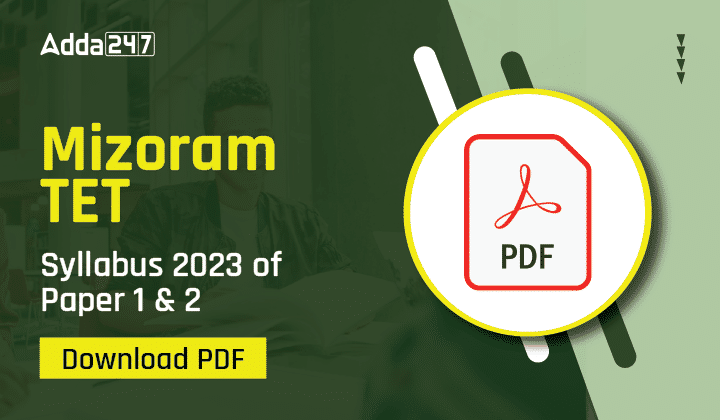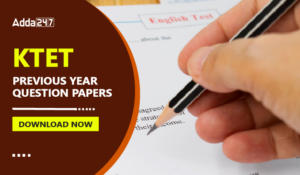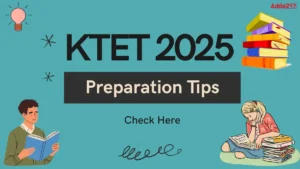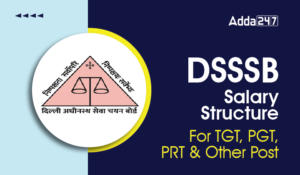Mizoram TET Syllabus 2023: The Mizoram TET syllabus has been released by the Mizoram Board of School Education (MBSE). Skimming through the syllabus and the exam pattern before starting the preparation for Mizoram TET is a crucial step for the candidates. Thus, the candidates are advised to carefully study the Mizoram TET syllabus 2023 to understand its nuances and the extent of effort they have to put in to excel in the exam. In this article, candidates will find the Mizoram TET syllabus 2023 and exam pattern in detail. You will also find the direct link to download the Mizoram TET syllabus 2023 PDF mentioned below.
Mizoram TET Syllabus 2023 Overview
Mizoram TET 2023 is a state-level eligibility test conducted by the Mizoram Board of School Education. The main objective of the Mizoram TET 2023 is to test the eligibility of the candidates aspiring to become government teachers in schools in Mizoram. To know more about the Mizoram TET 2023 go through the following table:
| Name of Examination |
Mizoram Teachers Eligibility Test |
| Conducting Body |
Mizoram Board of School Education |
| Post details |
Primary (Class I to V) teacher
Upper Primary (Class VI to VIII) teacher |
| Location |
Mizoram |
| Language |
English |
| Mode of Application |
Offline |
| Application fees |
Rs 500/- for Paper I or Paper II |
| Exam Timings |
09:30 AM – 12:00 PM (Paper-I)
01:30 PM – 04:00 PM (Paper-II) |
| Mizoram Notification PDF |
Mizoram TET Official Notification 2023 |
Mizoram TET Syllabus 2023 Exam Pattern
The candidates are advised to check out the Mizoram TET exam pattern 2023 thoroughly. Taking a look at the exam pattern and mark distribution helps the candidates have a better understanding of the intricacies and nature of the paper. The Mizoram TET Exam pattern is mentioned in the table below followed by two more tables with marks distribution scheme explained in detail.
Mizoram TET Exam Pattern 2023
| Language |
English & Mizo |
| Exam Mode |
Offline |
| Number of questions |
150 in each paper |
| Type of questions |
MCQ |
| Duration |
02 hours and 30 minutes |
Marks Distribution of Mizoram TET 2023 Paper-I
| Subject |
Number of Questions |
Marks |
| Child Development and Pedagogy |
30 |
30 |
| Language I |
30 |
30 |
| English (Language II) |
30 |
30 |
| Mathematics |
30 |
30 |
| Environmental Studies |
30 |
30 |
| Total |
150 |
150 |
Marks Distribution of Mizoram TET 2023 Paper-II
| Subject |
Number of Questions |
Marks |
| Child Development and Pedagogy |
30 |
30 |
| Language I |
30 |
30 |
| Language II |
30 |
30 |
| Mathematics/Science/Social Studies |
60 |
60 |
| Total |
150 |
150 |
Mizoram TET Syllabus 2023
It is highly recommended for the candidates carefully read the Mizoram TET syllabus 2023 to ensure a better understanding of the nature of the syllabus. It helps the candidates to fathom the extent of time and effort they have to put in to crack the exam. In the following table, candidates can find a glimpse of the syllabus to check out the outline of the syllabus. For a detailed syllabus click on the link given below.
Mizoram Paper-I Syllabus
Child Development And Pedagogy
| Child Development And Pedagogy |
| Part-I |
| Topic |
Sub-Topic |
| (a) Child development |
- Perspective in development
- Factors affecting child development
- Naturalistic Observations: Interviews, Anecdotal records, Narratives
- Physical – Motor Development
- Growth and maturation
- Gross and fine motor development skills in infancy and pre-school children
- Social and Emotional Development
- Personality development (Freud)
- Psycho-social development (Erikson)
- Attachment: Bowlby, Ainsworth
- Development of Emotions; Functions of emotions and the ability to regulate them.
- Childhood
- Childhood in the modern world. How poverty, globalization, and adult culture affect the child.
- Commonalities and diversities within the notion of childhood
- Context of socialization.
- Concept of socialization
- Parenting styles
- School culture
- Peer influence
- Competition, conflict, and cooperation
|
| (b) Concept of inclusive education & understanding children with special needs |
- Inclusive Education
- Concept of Inclusive Education
- Forms of inclusion and exclusion
- Addressing inequality and diversity in Indian classroom; pedagogical and curriculum concerns
- Children with special needs
- Identification, assessment, and intervention of disability
- Approaches and skills for teaching children with special needs.
- Gender, School and Society
- Social construction of masculinity and femininity
- Working towards gender equality in the classroom
|
| Part-II |
| (a) Teaching & Learning Process |
- Behaviourism & Constructivism and their educational implications
- Factors affecting learning
- Motivation for learning
- Evaluation
- Concept, Process & Purpose of Evaluation & Assessment
- Evaluation & Measurement
- Continuous and comprehensive evaluation
- Tools & Techniques of evaluation
|
| (b) Teaching Aptitude |
- Factors affecting teaching
- Methods & Techniques of teaching; Learner-centered teaching strategies
- Classroom management skills: Planning and implementation
- Qualities of a good facilitator
- Emotional maturity
- Balanced personality
- Attitude
- Values
- Professional ethics
- Conduct rules
- Inculcating democratic ideals and moral values.
|
Mizo
| Mizo |
| Part-I |
| Topic |
Sub-Topic |
| Lehkha chhiar hriat thiam leh hriat thiam loh enna tur thuziak (unseen passage) |
- Thu pakhat (one unseen passage)
- Hla pakhat (one unseen poem)
|
| A chunga mite atang khian heng ang zawhnate hi buatsaih tur a ni: |
- Hriat thiam leh thiam loh enna tur zawhnate (Comprehension question)
- Grammar zawhnate
|
| Part-II |
| Pedagogy of Mizo language learning |
- Mother tongue/First language: A awmzia leh pawimawhnate
- Primary school-a Mizo tawng zirtirnain a tumte (aims & objectives)
- Mizo tawng zirtirtu tha nihna leh thiam tur (characteristics & qualities)
- Tawng thiamnain a ken palite – Ngaihthlak thiamna, Tawng thiamna, Chhiar thiamna leh Ziak thiamna
- Heng zirtirnain a tum leh zirtir dan :
- Thu (prose)
- Hla ( nursery rhyme & poem)
- Grammar
- Thu ziak dan (writing composition)
- Thumal (vocabulary)
- Drama
- Lesson Plan: A pawimawhna leh plan dan chi hrang hrang
- Mizo tawng hman dik lohte
- Mizo tawng ziah zawm leh zawm loh turte
- Tawng upate
- Mizo tawng zirtir nana teaching aids tangkainate leh hman tangkai theih te
- Mizo tawng zirtir nana teaching aids hman tangkai theihte
- Learner assessment
- Classroom activities:
- Role play
- Dramatisation
- Recitation
- Discussion
- Debate
- Group Work
- Pair Work
- Project Work
|
ENGLISH Language
| ENGLISH |
| Part-I |
| Topic |
Sub-Topic |
| Language Comprehension |
Reading unseen passages – two passages (One prose or drama and one poem) with questions on comprehension, inference, grammar, and verbal ability. (Prose passage may be literary, scientific, narrative, or discursive) |
| Part-II |
| Pedagogy of Language Learning Mother Tongue and Language Development |
- Mother Tongue: Definition and meaning
- Aims and objectives of teaching first and second language in Elementary schools
- Characteristics and Qualities of a good language teacher
- Four Language Skills
- Objectives and method of teaching
- Prose
- Poetry
- Vocabulary
- Grammar
- Lesson Planning
- English Usage
- Idioms and Phrases
- Importance of Teaching Aids in Teaching English
- Learner Assessment
- Classroom Activities
- Role Play
- Dramatization
- Recitation
- Discussion
- Debate
- Group Work
- Pair Work
- Project Work
|
| Teaching Strategies |
- Teaching Prose
- Teaching Poetry
- Teaching Vocabulary
- Teaching Grammar
|
| Class Room Activities |
- Role Play
- Dramatization
- Recitation
- Extempore Speech
- Debate
- Story Telling
|
| Assessment |
- Concept and Purpose
- Responding to content and form
- Using portfolios for subjective assessment
|
English
| English |
| Part-I |
| Topic |
Sub-Topic |
| Language Proficiency |
- Reading unseen passages – one passage (One prose or drama and one poem) with questions on comprehension, inference, grammar, and verbal ability. (Prose passage may be literary, scientific, narrative, or discursive)
- Four Language Skills
- Grammar
- Vocabulary
|
| Part-II: Pedagogy of Language Development |
| (a) Issues on Teaching English |
- Teaching English as a second language and foreign-language: developmental, socio-economic and psychological factors, key factors affecting second language acquisition.
- Nature of Language
|
| (b) Approaches and Methods of Teaching English |
- Different approaches to the teaching of English:
- Behaviouristic Approach
- Structural Approach
- Cognitive Approach
- Constructivist Approach
- Communicative Approach
- Different methods and techniques of teaching English:
- Grammar translation method
- Audio lingual method
- Direct Method
- Bilingual Method
|
| (c) Planning |
- Unit planning and Lesson planning
- English across the curriculum
- Preparation and use of low-cost teaching aids
|
| (d) Teaching Strategies |
- Four Skills: Listening, Speaking, Reading and Writing
- Grammar
|
| (e) Developing and Assessing |
- Listening Skill
- Speaking Skill
- Reading Skill
- Writing Skill
|
Mathematics
| Mathematics |
| Part-I |
| Topic |
Sub-Topic |
| Contents |
- Geometry
- Shapes & Spatial Understanding
- Solids around us
- Numbers
- Addition and Subtraction
- Multiplication
- Division
- Measurement
- Weight
- Time
- Volume
- Data Handling
- Patterns
- Money
|
| Part-II |
| Pedagogical issues |
- Nature of Mathematics/Logical thinking; understanding children’s thinking and reasoning patterns and strategies of making meaning and learning
- Aims and objectives of teaching mathematics in primary schools
- Place of Mathematics in Curriculum
- Language of Mathematics
- Methods and techniques of teaching mathematics at primary stage
- Instructional materials in mathematics, their importance and improvisation
- Problems of teaching mathematics
- Assessment in mathematics
- Concept and purpose
- Techniques of assessment
- Assessment tools
- Diagnostic and Remedial Teaching
- Planning for teaching mathematics
- Annual Plan, Unit Plan, Lesson Plan
- Mathematical reasoning
- Communicating mathematics
|
Environmental Studies
| Environmental Studies |
| Part-I |
| Topic |
Sub-Topic |
| Contents |
- Family and Friends
- Relationships
- Work and Play
- Animals
- Plants
- Food
- Shelter
- Water
- Travel
- Things we do and make
|
| Part-II |
| Pedagogical issues |
- Concept and Scope of EVS
- Curriculum Organization
- EVS as an integrated area of studies.
- EVS as science and EVS as social science.
- Perspective in EVS Learning
- How Children learn – based on Piaget, Vygotsky, and Bruner
- Preconception and Alternative Conception in children.
- Classroom transaction
- Methods and techniques of teaching EVS: observation, activities, discussion, group work, field visits, projects, survey experimentation
- Process Skills in EVS: observation, classification, analysis, communication, measurement, prediction, expression, and inference.
- Different types of Teaching Learning Materials for teaching EVS.
- Indicators of Learning.
- Assessment in EVS
- Concept and Purpose of Assessment
- Techniques of Assessment
- Assessment Tools
|
Mizoram Paper-II Syllabus
Child Development And Pedagogy
| Child Development And Pedagogy |
| Part-I |
| Topic |
Sub-Topic |
| (a) Child development |
- Perspective in development
- Factors affecting child development
- Naturalistic Observations: Interviews, Anecdotal records, Narratives
- Physical – Motor Development
- Growth and maturation
- Gross and fine motor development skills in infancy and pre-school children
- Social and Emotional Development
- Personality development (Freud)
- Psycho-social development (Erikson)
- Attachment: Bowlby, Ainsworth
- Development of Emotions; Functions of emotions and the ability to regulate them.
- Childhood
- Childhood in the modern world. How poverty, globalization, and adult culture affect the child.
- Commonalities and diversities within the notion of childhood
- Context of socialization
- Concept of socialization
- Parenting styles
- School culture
- Peer influence
- Competition, conflict, and cooperation
|
| (b) Concept of inclusive education & understanding children with special needs |
- Inclusive Education
- Concept of Inclusive Education
- Forms of inclusion and exclusion
- Addressing inequality and diversity in Indian classroom; pedagogical and curriculum concerns
- Children with special needs
- Identification, assessment, and intervention of disability
- Approaches and skills for teaching children with special needs.
- Gender, School and Society
- Social construction of masculinity and femininity
- Working towards gender equality in the classroom
|
| Part II |
| (c) Teaching & Learning Process |
- Behaviourism & Constructivism and their educational implications
- Factors affecting learning
- Motivation for learning
- Evaluation
- Concept, Process & Purpose of Evaluation & Assessment
- Evaluation & Measurement
- Continuous and comprehensive evaluation
- Tools & Techniques of evaluation
|
| (d) Teaching Aptitude |
- Factors affecting teaching
- Methods & Techniques of teaching; Learner-centered teaching strategies
- Classroom management skills: Planning and implementation
- Qualities of a good facilitator
- Emotional maturity
- Balanced personality
- Attitude
- Values
- Professional ethics
- Conduct rules
- Inculcating democratic ideals and moral values
|
Mizo Language
| Mizo |
| Part-I |
| Topic |
Sub-Topic |
| Lehkha chhiar hriat thiam leh hriat thiam loh enna tur thuziak (unseen passages) |
- Thu pakhat (one unseen passage)
- Hla pakhat (one unseen poem)
|
| A chunga mite atang khian heng ang zawhnate hi buatsaih tur a ni: |
- Hriat thiam leh thiam loh enna tur zawhnate
- (Comprehension questions)
- Grammar zawhnate
|
| Part II |
| Pedagogy of Mizo language learning |
- Mother tongue/First language: A awmzia leh pawimawhnate
- Middle school-a Mizo tawng zirtirnain a tumte (aims & objectives)
- Mizo tawng zirtirtu tha nihna leh thiam tur (characteristics & qualities)
- Tawng thiamnain a ken palite – Ngaihthlak thiamna, Tawng thiamna, Chhiar thiamna leh Ziak thiamna
- Heng zirtirnain a tum leh zirtir dan :
- Thu (prose)
- Hla ( nursery rhyme & poem)
- Grammar
- Thu ziak dan (writing composition)
- Thumal (vocabulary)
- Drama
- Lesson Plan: A pawimawhna leh plan dan chi hrang hrang
- Mizo tawng hman dik lohte
- Mizo tawng ziah zawm leh zawm loh turte
- Tawng upate
- Mizo tawng zirtir nana teaching aids tangkainate
- Mizo tawng zirtir nana teaching aids hman tangkai theihte
- Learner assessment
- Content analysis
- Classroom activities:
- Roleplay
- Dramatisation
- Recitation
- Discussion
- Debate
- Group Work
- Pair Work
- Project Work
|
ALTERNATIVE ENGLISH
| ALTERNATIVE ENGLISH |
| Part-I |
| Topic |
Sub-Topic |
| Language Comprehension |
Reading unseen passages – two passages (One prose or drama and one poem) with questions on comprehension, inference, grammar, and verbal ability. (Prose passage may be literary, scientific, narrative, or discursive) |
| Part II: Pedagogy of Language Learning |
| (a) Mother Tongue and Language Development: |
- Mother Tongue: Definition and meaning
- Aims and objectives of teaching first and second language in Elementary schools
- Characteristics and Qualities of a good language teacher
- Relationship between a child’s growth and language development
- Importance of Mother Tongue in a child’s growth and development and education
|
| (b) Teaching Strategies |
- Teaching Prose
- Teaching Poetry
- Teaching Vocabulary
- Teaching Grammar
|
| (c) Class Room Activities |
- Role Play
- Dramatisation
- Recitation
- Extempore Speech
- Debate
- Story Telling
|
| (d) Assessment |
- Concept and Purpose
- Responding to content and form
- Using portfolios for subjective assessment
|
ENGLISH
| ENGLISH |
| Part-I |
| Topic |
Sub-Topic |
| Language Proficiency |
- Reading unseen passages – one passage (One prose or drama and one poem) with questions on comprehension, inference, grammar, and verbal ability. (Prose passage may be literary, scientific, narrative, or discursive)
- Four Language Skills
- Grammar
- Vocabulary
|
| Part 2: Pedagogy of Language Development |
| (a) Issues on Teaching English |
- Teaching English as a second language and foreign-language: developmental, socio-economic and psychological factors, key factors affecting second language acquisition.
- Nature of Language
|
| (b) Approaches and Methods of Teaching English |
- Different approaches to the teaching of English:
- Behaviouristic Approach
- Structural Approach
- Cognitive Approach
- Constructivist Approach
- Communicative Approach
- Different methods and techniques of teaching English:
- Grammar translation method
- Audio lingual method
- Direct Method
- Bilingual Method
|
| (c) Planning |
- Unit planning and Lesson planning
- English across the curriculum
- Preparation and use of low cost teaching aids
|
| (d) Teaching Strategies |
- Four Skills: Listening, Speaking, Reading and Writing
- Grammar
|
| (e) Developing and Assessing |
- Listening Skill
- Speaking Skill
- Reading Skill
- Writing Skill
|
MATHEMATICS
| MATHEMATICS |
| Part-I |
| Topic |
Sub-Topic |
| Contents |
- Number System
- Knowing our Numbers
- Playing with Numbers
- Whole Numbers
- Negative Numbers and Integers
- Fractions
- Algebra including Ratio and Proportion
- Geometry
- Basic geometrical ideas (2 – D)
- Understanding Elementary Shapes (2 – D and 3 – D)
- Symmetry: (reflection)
- Mensuration
- Data handling
|
| Part II |
| Pedagogical issues |
- Nature of Mathematics/Logical thinking; understanding children’s thinking and reasoning patterns and strategies of making meaning and learning
- Aims and objectives of teaching mathematics in middle schools
- Place of Mathematics in Curriculum
- Language of Mathematics
- Methods and techniques of teaching mathematics at the middle stage
- Instructional materials in mathematics, their importance, and improvisation
- Problems of teaching mathematics
- Assessment in mathematics
- Concept and purpose
- Techniques of assessment
- Assessment tools
- Diagnostic and Remedial Teaching
- Planning for teaching mathematics
- Annual Plan, Unit Plan, Lesson Plan
- Mathematical reasoning
- Communicating mathematics
|
Science
| Science |
| Part-I |
| Topic |
Sub-Topic |
| Contents |
- Food (Sources of food, Components of food, Cleaning food)
- Materials (Materials of daily use)
- The World of the Living
- Moving Things People and Ideas
- How things work (Electric current and circuits, Magnets)
- Natural Phenomena
- Natural Resources
|
| Part II |
| Pedagogical Issues |
- Aims and Objectives of teaching science in Elementary School
- Problems and remedies of teaching Science
- Correlation and interdependence of science with other subjects
- Educational values of teaching science
- Qualities of good science teacher
- Development of scientific attitude
- Methods of teaching science in Elementary School
- Science museum, field trip, projects, and exhibition
- Different types of assessment
- Teaching-learning materials (Teaching Aids) in Science
|
Social Science
| Social Science |
| Part-I Contents |
| Topic |
Sub-Topic |
| Our Pasts |
- What, Where, How, and When?
- On the Trail of the Earliest People
- From Gathering to Growing Food
- In the Earliest Cities
- What Books and Burials Tell Us
- New Questions and Ideas
- New Kings and Kingdoms
- The Delhi Sultans
- The Mughal Empire
- Towns, Traders, and Craft persons
- Tribes, Nomads, and Settled Communities
- From Trade to Territory
- Ruling the Countryside
- When People Rebel – 1857 and After
- Weavers, Iron Smelters, and Factory Owners
- Civilising the “Native”, Educating the Nation
- The Making of the National Movement: 1870s-1947
- India After Independence
|
| Geography |
- The Earth in the Solar System
- Globe
- Motions of the Earth
- Environment
- Inside Our Earth
- Air
- Water
- Natural Vegetation and Wildlife
- Human Environment – Settlement, Transport and
|
| Communication |
- Resources
- Land, Soil, Water, Natural Vegetation and Wildlife Resouces
- Agriculture
- Human Resources
|
| Social and Political Life |
- Diversity and Discrimination
- Key Element of a Democratic Government
- Panchayati Raj
- Rural Administration
- Urban Administration
- Equality in Indian Democracy
- State Government
- Gender
- Indian Constitution and Secularism
- Parliament and the making of Laws
- Social Justice and the Marginalized
|
| Part 2: Pedagogical Issues |
| Concept and Nature of Social Science/ Social Studies |
|
| Important themes in Social Studies |
- Time continuity and change: Social structure and Social stratification.
- Civilization: History and Culture.
- State: Authority, Nation, Nation-state, and Citizen.
- Region, Resources and People.
- Market and Exchange
|
| Classroom transaction/Processes |
- Different methods of teaching Social Science/Social Studies: Discovery, Projects, Narration, Comparisons, Observation, Dialogue, and Discussion.
- Teaching Learning Materials: Need and Importance, types, improvisation.
- Concept and Sources of Data.
|
| Evaluation in Social Science/Social Studies |
- Types of evaluation
- Tools and techniques
|
Mizoram TET Syllabus 2023 PDF
The candidates can access the Mizoram TET Syllabus 2023 PD by clicking on the following link. The candidates are advised to view and download the Mizoram TET Syllabus 2023 for future reference.
Direct Link to Mizoram TET Syllabus 2023 PDF
Sharing is caring!



 KTET Previous Year Question Papers PDF D...
KTET Previous Year Question Papers PDF D...
 KTET Preparation Tips 2025, Online Prepa...
KTET Preparation Tips 2025, Online Prepa...
 DSSSB Teacher Salary in Hand For TGT PGT...
DSSSB Teacher Salary in Hand For TGT PGT...




